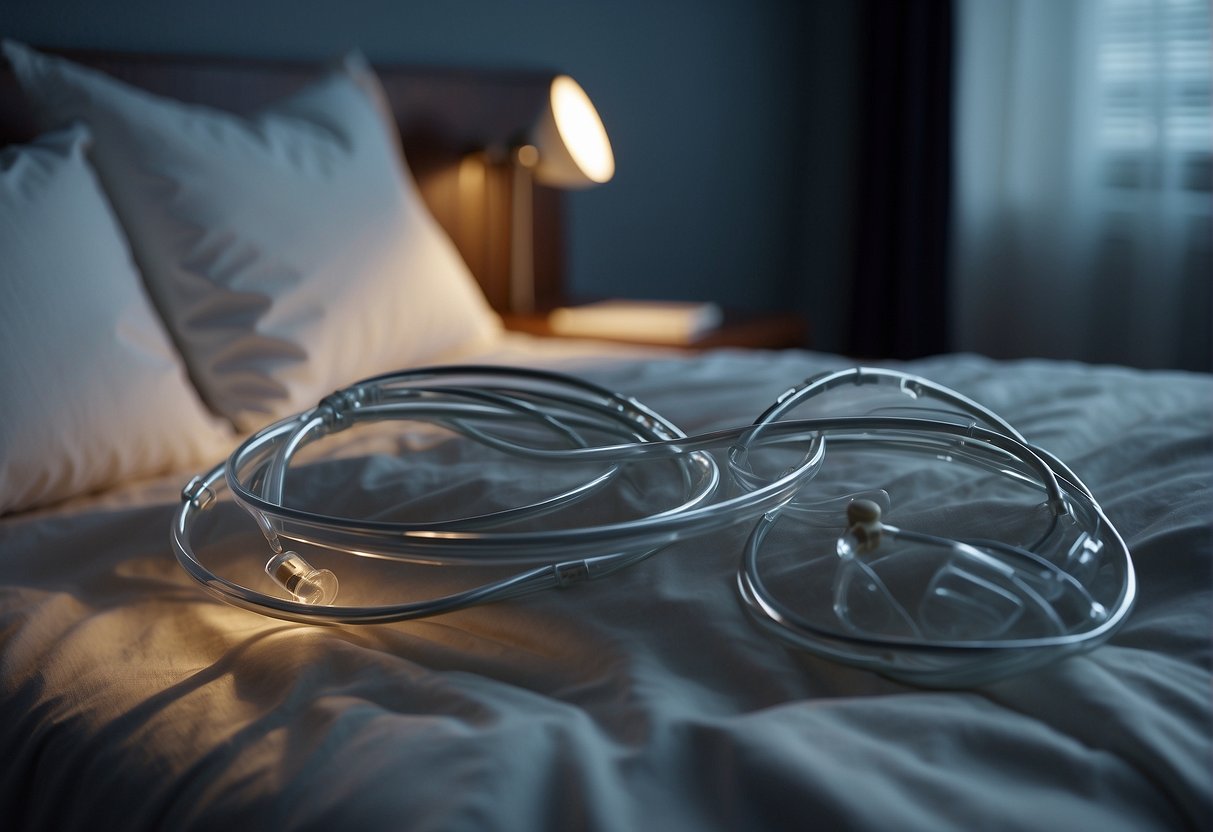If you have recently been diagnosed with a kidney stone, obstruction, or tumor, your doctor may have recommended a kidney stent to help alleviate your symptoms. Kidney stents are small tubes that are placed in the ureter, which is the tube that connects the kidney to the bladder. They are designed to help keep the ureter open, allowing urine to flow freely from the kidney to the bladder.
Table of Contents
Purpose of Kidney Stents
The purpose of a kidney stent is to relieve blockages in the ureter caused by a variety of conditions, such as kidney stones, tumors, or scar tissue. They can also be used to help drain urine from the kidney if the ureter is blocked. Kidney stents can be placed in a minimally invasive procedure, and they are usually removed after a few weeks to a few months.
Types of Stents and Materials
There are several types of kidney stents available, and the type that is used will depend on your specific needs. Some stents are made of plastic, while others are made of metal or silicone. Some stents are coated with medication to help reduce stent-related discomfort.
Kidney stents can be temporary or permanent. Temporary stents are usually made of plastic and are removed after a few weeks to a few months. Permanent stents are usually made of metal or silicone and are designed to be left in place permanently.
Preparation for Sleep with a Kidney Stent

If you have a kidney stent, getting a good night’s sleep can be challenging. However, by making a few adjustments to your bedtime routine, you can improve your sleep quality and reduce discomfort. Here are some tips to help you prepare for sleep with a kidney stent:
Sleep Hygiene Practices
Good sleep hygiene practices can help you fall asleep faster and stay asleep longer. Here are some tips to improve your sleep hygiene:
- Stick to a regular sleep schedule: Go to bed and wake up at the same time every day, even on weekends.
- Create a relaxing sleep environment: Keep your bedroom cool, dark, and quiet. Use earplugs or a white noise machine if necessary.
- Avoid caffeine, alcohol, and nicotine: These substances can interfere with your sleep and make it harder to fall asleep.
- Limit screen time before bed: The blue light emitted by electronic devices can disrupt your sleep. Avoid using electronic devices for at least an hour before bed.
Bedtime Routine Adjustments
Making a few adjustments to your bedtime routine can help you sleep more comfortably with a kidney stent. Here are some tips to consider:
- Use a body pillow: A body pillow can help you find a comfortable sleeping position. Place the pillow between your legs or under your knees to reduce pressure on your stent.
- Experiment with sleeping positions: Try sleeping on your side or in a reclined position to find the most comfortable sleeping position.
- Use heat therapy: Applying heat to your lower back can help reduce discomfort and promote relaxation. Use a heating pad or take a warm bath before bed.
- Adjust your pillow: Use a soft pillow that supports your neck and head. Avoid using a pillow that is too high or too firm, as this can put pressure on your stent.
Managing Discomfort and Pain
If you have a kidney stent, you may experience discomfort and pain while trying to sleep. Fortunately, there are several ways to manage these symptoms. In this section, we will discuss medications and non-medication pain management techniques that can help you sleep more comfortably.
Medications for Pain Relief
If you are experiencing kidney stent pain, there are several over-the-counter pain relievers that you can take to manage your symptoms. Ibuprofen and acetaminophen are two common pain relievers that can be effective in reducing pain. However, if your pain is severe, your doctor may prescribe prescription pain relievers.
Alpha-blockers and anticholinergic medications are two prescription medications that can be used to manage kidney stent pain. Alpha-blockers can help relax the muscles in your ureter, which can reduce pain. Anticholinergic medications can help reduce bladder spasms, which can also help reduce pain.
Non-Medication Pain Management
Heat therapy can be an effective non-medication pain management technique for kidney stent pain. Applying a heating pad or hot water bottle to your abdomen or lower back can help reduce pain and discomfort. Just be sure to use a low heat setting and avoid leaving the heat source on for too long.
Pelvic tilts and other gentle stretches can also help reduce kidney stent pain. These exercises can help stretch and strengthen the muscles in your lower back and abdomen, which can help reduce pain and discomfort.
Maintaining Health and Preventing Complications
When you have a kidney stent, it is important to take care of your health and prevent complications. Here are some tips to help you maintain your health and avoid problems:
Hydration and Fluid Intake
One of the most important things you can do to maintain your health with a kidney stent is to stay hydrated. Drinking plenty of water and other fluids can help keep your urine flowing and prevent blockages. Aim to drink at least 8-10 cups of water per day, or more if your healthcare provider recommends it.
Physical Activity and Exercise
While you may feel uncomfortable or sore after your stent placement procedure, it is important to stay active and get regular exercise. Physical activity can help improve your kidney function and prevent complications like blood clots. Talk to your doctor about what types of exercise are safe for you, and start with light activities like walking or gentle stretching.
Monitoring for Signs of Infection or Blockage
It is important to monitor your symptoms and watch for signs of infection or blockage. If you experience fever, chills, or other signs of a urinary tract infection, contact your healthcare provider right away. You should also watch for changes in your urine flow, pressure, or spasms, as well as frequent urination, blood in your urine, or incontinence. If you notice any of these symptoms, seek medical attention immediately.
Lifestyle Considerations While Having a Kidney Stent
Living with a kidney stent can be challenging, especially when it comes to daily activities. You may need to make some adjustments to your lifestyle to ensure that you are comfortable and avoid any complications. Here are some lifestyle considerations you should keep in mind while having a kidney stent:
Dietary Adjustments
Your diet can impact your kidney health and the function of your stent. It is essential to avoid foods that can irritate your bladder or cause kidney stones. Some foods that you should avoid include acidic foods such as citrus fruits, tomatoes, and vinegar. Caffeine and alcohol can also irritate your bladder and cause discomfort. It is best to limit your consumption of these substances.
On the other hand, you should include more fiber-rich foods in your diet, such as whole grains, fruits, and vegetables. These foods can help prevent constipation, which can cause discomfort and pain.
Avoiding Certain Activities and Substances
You should avoid certain activities that can put pressure on your bladder or cause discomfort. These activities include high-impact exercises, such as running and jumping, and lifting heavy weights.
It is also essential to avoid smoking and exposure to secondhand smoke. Smoking can irritate your bladder and cause complications.
Relaxation techniques such as meditation and deep breathing can help you manage stress and reduce anxiety. Stress can exacerbate your symptoms and cause discomfort.
Frequently Asked Questions
What activities should be avoided after a kidney stent placement?
After a kidney stent placement, it is important to avoid strenuous activities such as heavy lifting, running, or jumping. These activities can put pressure on the stent and cause discomfort or even dislodge the stent. It is recommended to avoid such activities for at least a week after the stent placement.
How can one manage pain associated with a ureteral stent during sleep?
Pain associated with a ureteral stent during sleep can be managed by taking pain medication as prescribed by your doctor. Additionally, sleeping on your side and using a pillow to support your back can help alleviate discomfort. It is also recommended to avoid drinking fluids before bedtime to reduce the need to urinate during the night.
What are the signs of an infection from a ureteral stent to watch out for?
Signs of an infection from a ureteral stent include fever, chills, nausea, vomiting, and pain or discomfort in the lower back or abdomen. If you experience any of these symptoms, it is important to contact your doctor immediately.
Is it possible to pass a kidney stone while a stent is in place, and how does it affect recovery?
It is possible to pass a kidney stone while a stent is in place, but it may cause discomfort or pain. Passing a stone with a stent in place does not typically affect recovery, but it is important to follow your doctor’s instructions and attend all follow-up appointments to ensure proper healing.
Are there any specific sleeping positions recommended for comfort with a kidney stent?
Sleeping on your side with a pillow to support your back is recommended for comfort with a kidney stent. Avoid sleeping on your stomach or back as this can put pressure on the stent and cause discomfort.
What guidelines should be followed regarding alcohol consumption with a kidney stent?
It is recommended to avoid alcohol consumption while a kidney stent is in place, as alcohol can irritate the bladder and cause discomfort or pain. Additionally, alcohol can interfere with the effectiveness of pain medication and prolong recovery time.


